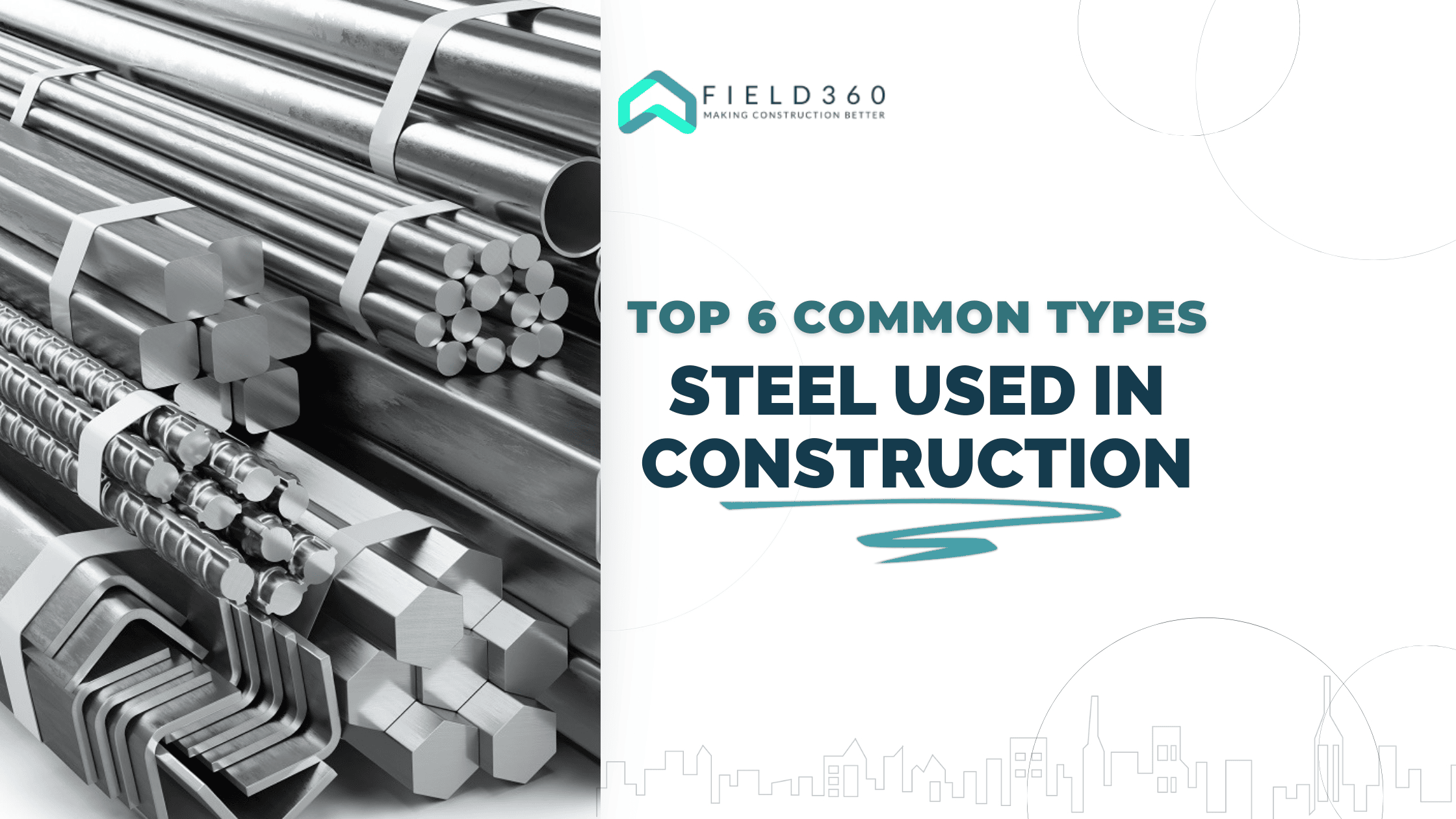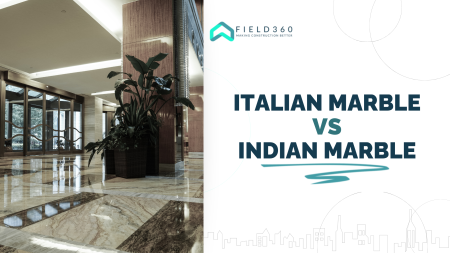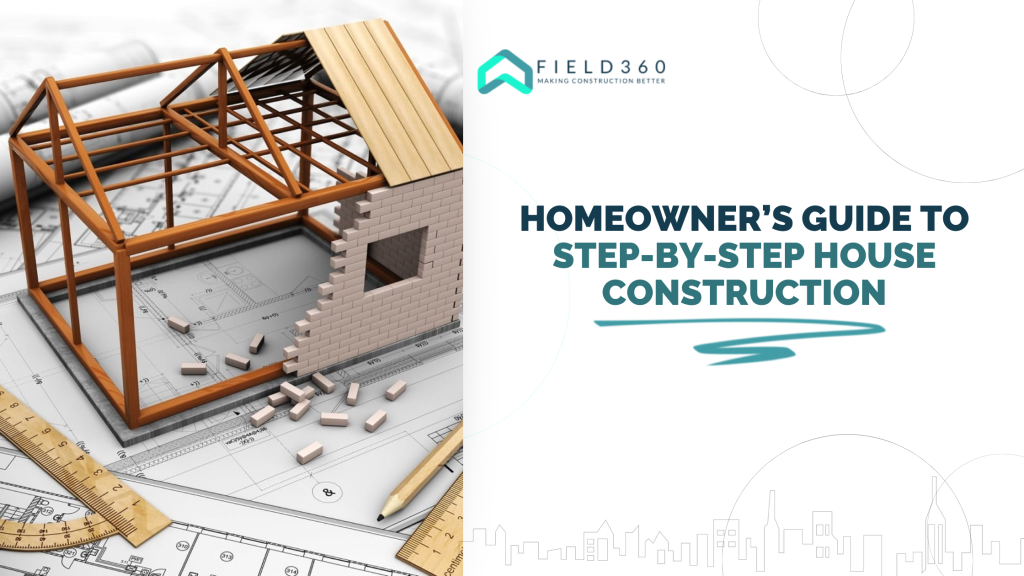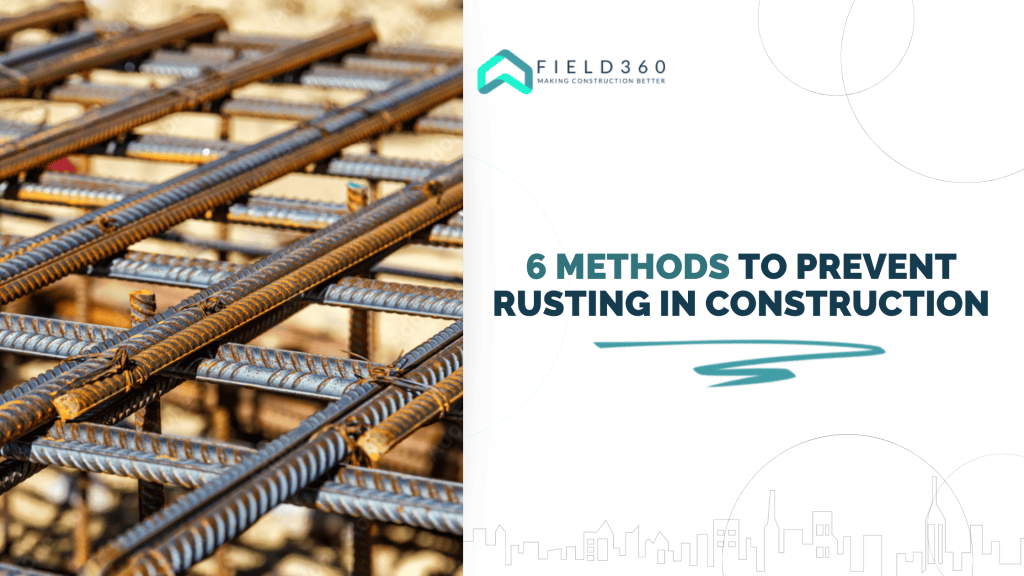Home / Blog / Construction Management / Top 6 Common Types of Steel Used in Construction
People working in the construction business are well aware of the importance of steel; it is one of the most crucial materials to complete a construction project. Steel provides much-needed support to the structure. Apart from support, steel is also responsible for providing strength and flexibility to the constructed structure.
Nowadays, the market is flooded with various grades of steel used in construction projects to serve the different needs of clients. To meet the different demands of the clients, the builders should be informed about the different types of steel bars available to use in the market, and the types of steel best suited for different structures. Hence, choosing the best steel for construction is very critical for every enterprise. Here, we are going to introduce you to different types of steel used in construction projects.
Alloy Steel
Alloy Steel
As the name suggests, alloy steel consists of various popular metals such as manganese, silicon, nickel, copper, chromium, and aluminum. The amount of metal present in the different alloy steels can affect the ductility, corrosion resistance, and weldability of the steel. Alloy steel has benefits like better temperature resistance, stronger material, less deformation and breaking, increased hardenability, and a less expensive option in steel for construction.
There are two types of alloy steel: low alloy steel and high alloy steel. When building, high alloy steel is used to store liquids, chemicals, mining materials, and medical equipment. Low alloy steel is appropriate for various uses, such as investigating outlets and seamless rolled ring forging, etc.
Steel Rebar
Steel Rebar
Rebar steel is considered to be the best steel for house construction. It is basically used in reinforced concrete or masonry constructions and is usually referred to as reinforcing or fortifying steel, it comes in use as a strain device as well. The edges of this type of steel allow it to be mechanically secured in a better way within the solid using carbon steel. It comes in a variety of grades of steel used in construction with varying yield strengths, required elasticity, chemical composition, and elongation percentage factors, and it retains the solid under pressure. The following are the types of steel rebars that are currently available in the market:
- Plain steel wire
- Epoxy-coated steel bars
- Plain bars and rail steel deformed bars
- TMT steel bars
- Stainless steel
- Low-alloy steel
- Axel steel
- Low carbon steel bars
In addition to its strength and physical appearance, rebar steel provides resistance and stiffness over a wide area; that other types of steel are not usually build for.
Stainless Steel
Stainless Steel
Stainless Steel
Structures resistant to explosions and impacts, such as blast and security walls, gates, security barriers, and bollards, are made of stainless steel. The stainless steel has excellent ductile and strain-hardening properties, which allow it to withstand significant impact without breaking. This great ductility is a helpful characteristic when it’s necessary to resist seismic loading.
However, because stress corrosion cracking is a possibility, extra care must be taken when it comes to stainless steel structural components with significant residual stresses in swimming pool environments.
Cabon Steel
Cabon Steel
Cabon Steel
Carbon, manganese, silicon, phosphorus, and sulfur impurities make up carbon steel. The amount of carbon in the alloy determines the strength and flexibility of carbon steel. So the alloy becomes stronger and harder as the carbon content rises. Its advantages include a great resistance to heat, fire, size, and corrosion, and being available in a range of forms to fulfill the unique needs of each client.
It is also more resilient and stronger than mild steel, with greater elasticity, and is often used in water-related applications like plumbing. It is considered to be a good option among all types of steel in construction projects.
Mild Steel
Mild Steel
Mild Steel
Mild Steel
Mild steel is very popular for its high plasticity which makes it incredibly flexible and pliable. It does not break when bent and can survive natural calamities like earthquakes without steel cracking.
This is the most beneficial aspect of mild steel. It is rare for a steel structure to collapse or be destroyed. Its occupants can be saved because it is strong enough to withstand any tragedy and won’t break.
Structural Steel
Structural Steel
Structural Steel
Structural Steel
This kind of steel is produced using a precise cross-section that strictly follows the mechanical and chemical composition standards and is used to construct structural steel shapes.
Structural steel is strong, resilient, and ductile; hence, it can be formed into nearly any shape depending on the project. Structural steel can be constructed very instantly upon arrival at the building site. Structural steel has the following types of steel in civil engineering to choose from for various purposes.
- I-beam,
- Z-beam,
- HSS-beam,
- L-beam (angle),
- T-beam,
- Rail profile,
- Bars, rods, plates,
- Structural channel (C-beam, cross-section),
- Open joist of the web
It is known that structural steel is naturally fire-resistant, but if it overheats to the point that it starts to lose strength, fire protection should be provided. Although structural steel can resist a variety of disasters, it should be protected from corrosion when used to construct tall buildings.
For an in-depth understanding of the role and advantages of beams in construction, consider exploring our detailed guide, What is Beam in Construction – Purpose, Types And Benefits. This resource provides valuable insights into the selection and benefits of different beam types for your construction needs.
Conclusion
The only material that can offer the quality needed for construction is steel; it is a practical and affordable replacement for other materials. Steel construction is more environmentally friendly than other building materials, and for that reason alone, it is recommended. In the previous sections, we tried to equip you with insights about the types of steel used in construction and how it is important for the structures.
Frequently Asked Questions
Frequently Asked Questions
What is structural steel used for?
Structural steel is commonly used for constructing bridges, buildings, roads, and more.
Which is the best steel for construction?
Alloy steel is often considered the best steel for construction as it has higher resistance to corrosion and hardenability. They have the best capacity to retain total strength through time.
What are the different steel grades for construction?
The following are the different steel grades for construction:
– Mild Steel Grade I (Fe 410)
– Mild Steel Grade II (Fe 410)
– Mild Steel Grade III (Fe 415)
– Mild Steel Grade IV (Fe 500)
– Mild Steel Grade V (Fe 550)
Why is it suggested to use steel as construction material?
It is widely popular to use steel as construction material as steel offers advantages like high resistance to basic pressure, resistance to thawing and freezing, uniform dimension, and good quality.












